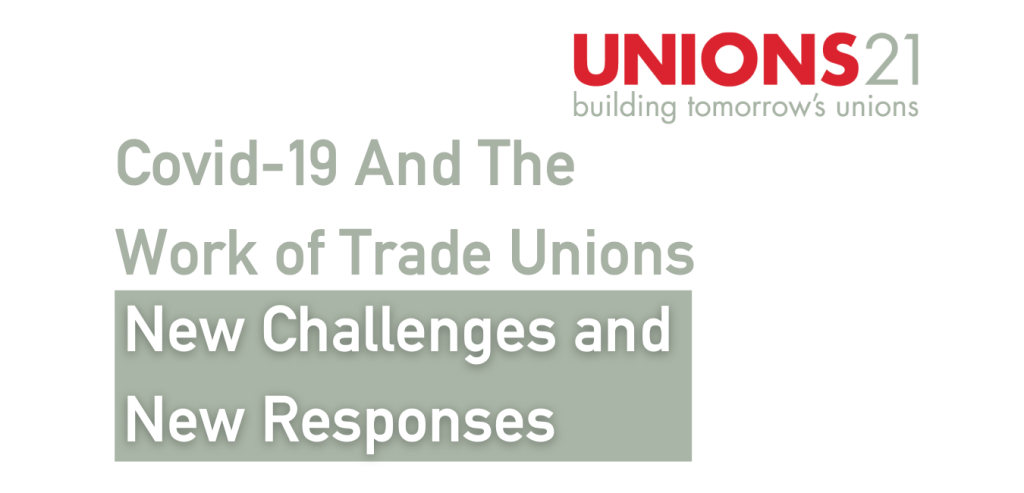By Becky Wright, Executive Director, Unions 21 | 3 min
It is safe to say that the COVID-19 pandemic has touched on every part of our lives. Home, education, work have all been upended by changes designed to halt the spread of the virus. As changes began in the workplace, unions found themselves not immune to the need for change.
But, what did they do to respond to the crisis and what has been the outcome for the long term survival of unions?
This question became important to Unions 21 unions as we began to come out of the first wave of the pandemic. How we have adapted, shifted and wholesale changed to respond to the needs and demands of members and the workforce? What needed to be shared?
Finding the answer to this became front and centre of our work towards the end of 2020. What lessons could we learn from the ways in which unions had adapted and changed their working practices during the biggest upheaval that many of us have experienced?
As Tom Hunt outlined in his blog, it was important for us to reflect back on and understand how we had done in negotiating better pay and conditions, securing improvements to workplace safety, ensuring key workers get PPE, protecting the rights of homeworkers, and achieving significant outcomes like the introduction of the furlough scheme and COVID-safe workplace regulations.
The culmination of this research, thanks to the support of the Alex Ferry Foundation and Unions 21 unions, is a report which outlines the changes unions made during 2020 to member engagement, recruitment and retention, advocacy and influencing, training members and supporting reps, representation of members, and union democracy and governance. It also looks at how unions as organisations adapted to remote working.
We found that whilst there have been challenges, there has been a sense within unions of a reinvigorated sense of purpose with increased and deepened member engagement; activism has increased, and there are encouraging signs broadly that membership will have increased during 2020.
The report highlights the key changes unions have made and offers case studies to enable unions to continue to adapt and evolve. But, change does not stop as we move into 2021. In fact, it will most likely be necessary in order to build on the gains of 2020. While vaccination is on the horizon, the pandemic is still ever present for the immediate future. Therefore, it’s imperative that unions reflect on the changes they made during 2020, and assessing what has worked and why is crucial. As well as looking inwards at their own capacity, unions also need to assess the impact on work COVID-19 has brought and what changes unions may need to make as a result.
Join us for the report launch here where you can see exactly how unions have innovated, how they have done it and what we still need to look at in 2021.



